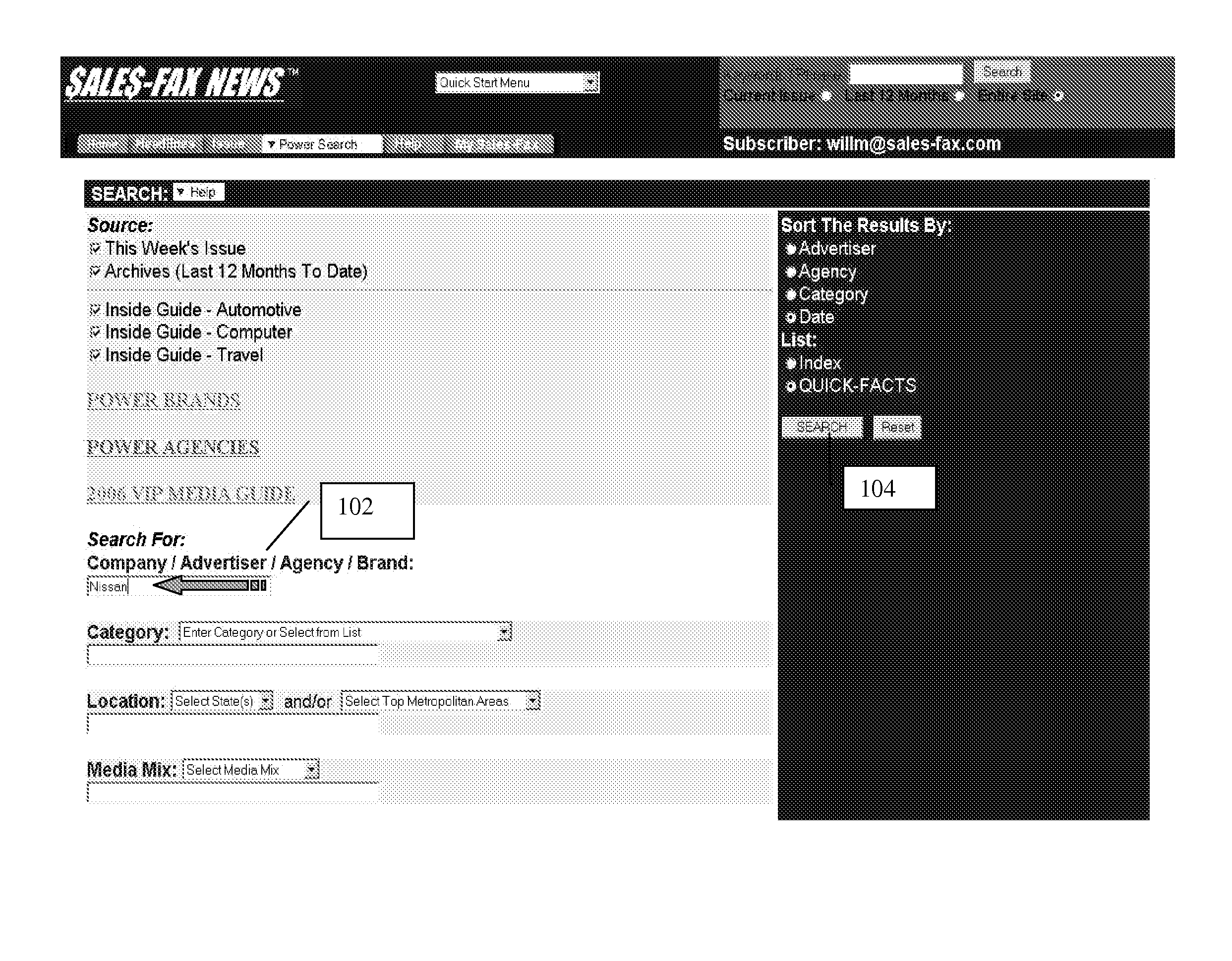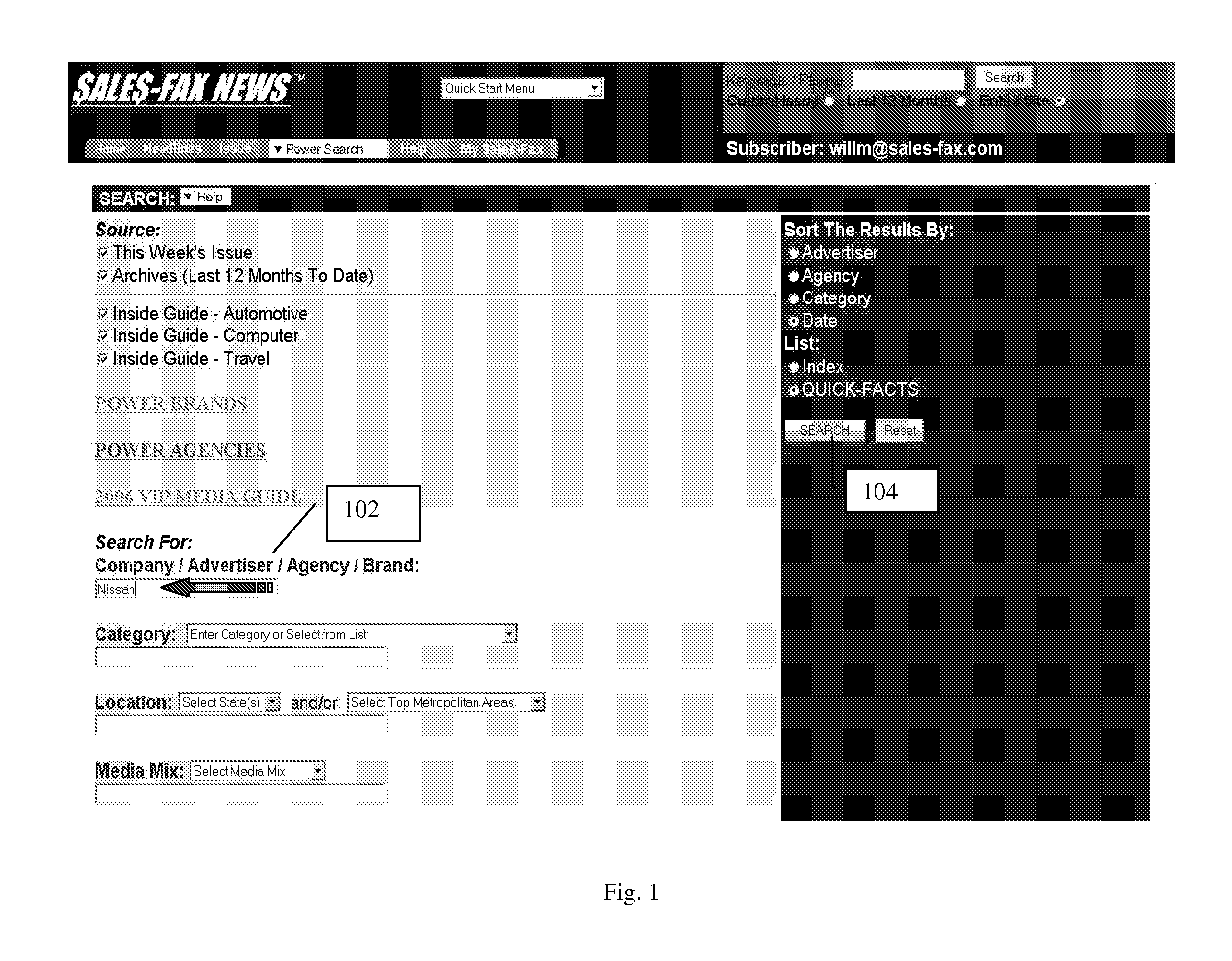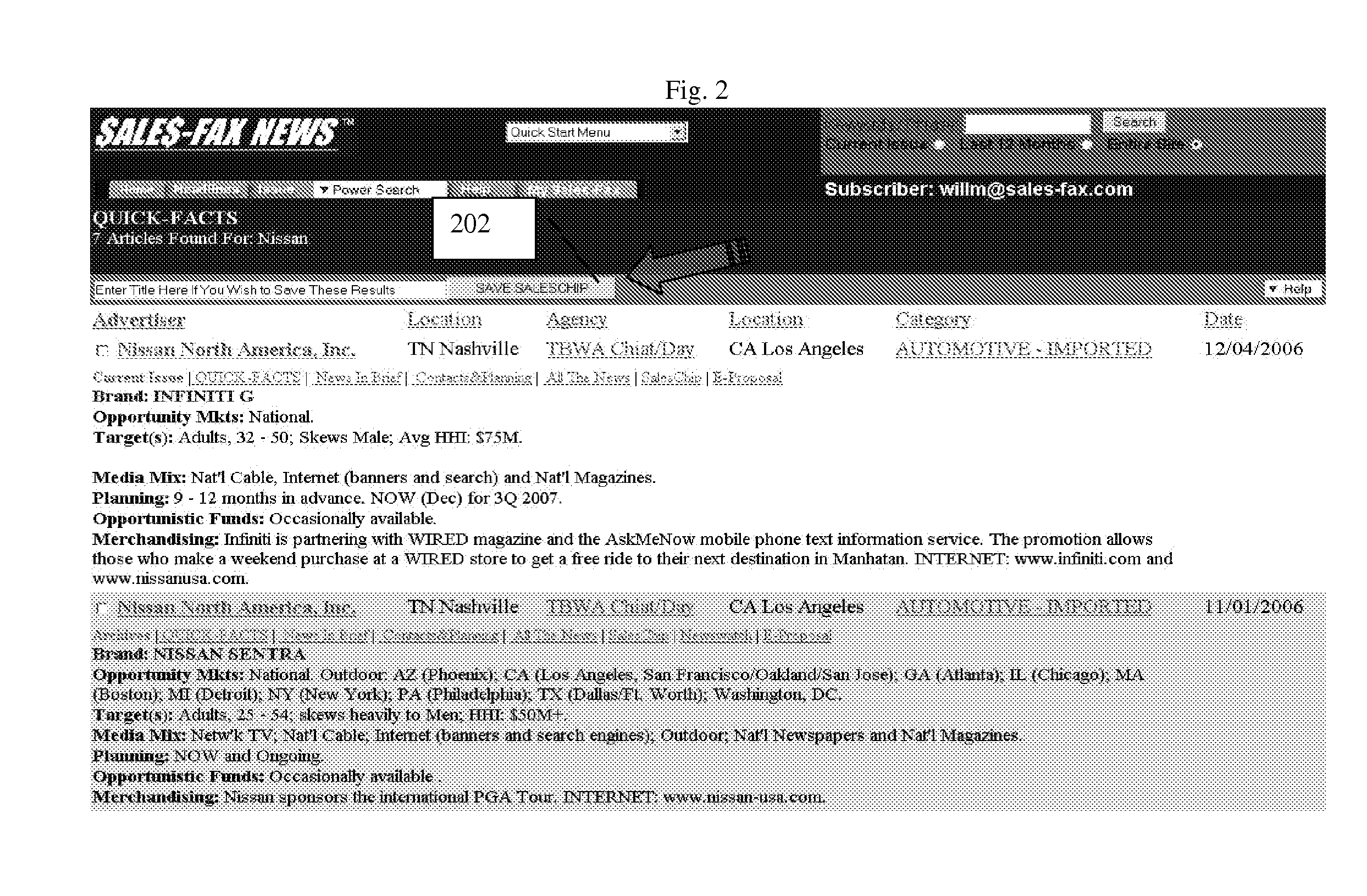System for searching network accessible data sets
a data set and network technology, applied in the field of network accessible data set search system, can solve the problems of time and labor, and achieve the effect of preventing the need to store results, convenient customization of templates, and convenient storage of queries
- Summary
- Abstract
- Description
- Claims
- Application Information
AI Technical Summary
Benefits of technology
Problems solved by technology
Method used
Image
Examples
Embodiment Construction
[0081]The inventive system for searching network accessible data is referred to herein by the trade name “SalesChip” and is integrated in one non-limiting embodiment via the on-line publication “$ALE$-FAX NEWS.” The present invention is a command-string which saves a query in a database, and subsequently allows the query to be reactivated with the help of a Handler. The Handler conducts a search for a unique Identifier, and forwards the results (the saved query) to a URL with instructions that tell a server to re-run the query.
[0082]Referring now to FIG. 1, the process begins with entering a query into a search engine. The example shown in FIG. 1 is a query for “Nissan” entered in the “Parent / Company” search box 102 and using Search Button 104 to search. If the results of the search are satisfactory, the search is saved. FIG. 2 shows the results of searching for any news about Nissan published by $ALE$-FAX NEWS. The UI (User Interface) in this embodiment is a button labeled “Save Sa...
PUM
 Login to View More
Login to View More Abstract
Description
Claims
Application Information
 Login to View More
Login to View More - R&D
- Intellectual Property
- Life Sciences
- Materials
- Tech Scout
- Unparalleled Data Quality
- Higher Quality Content
- 60% Fewer Hallucinations
Browse by: Latest US Patents, China's latest patents, Technical Efficacy Thesaurus, Application Domain, Technology Topic, Popular Technical Reports.
© 2025 PatSnap. All rights reserved.Legal|Privacy policy|Modern Slavery Act Transparency Statement|Sitemap|About US| Contact US: help@patsnap.com



